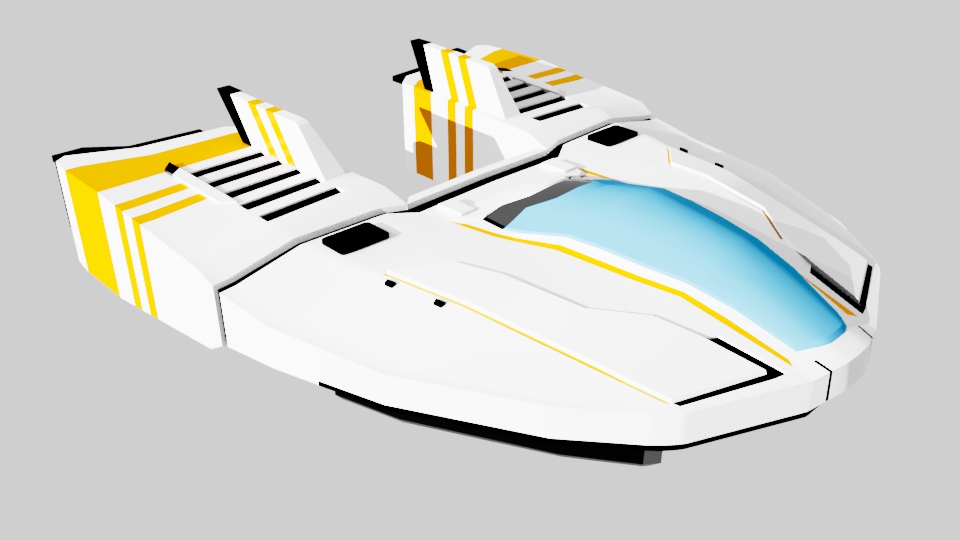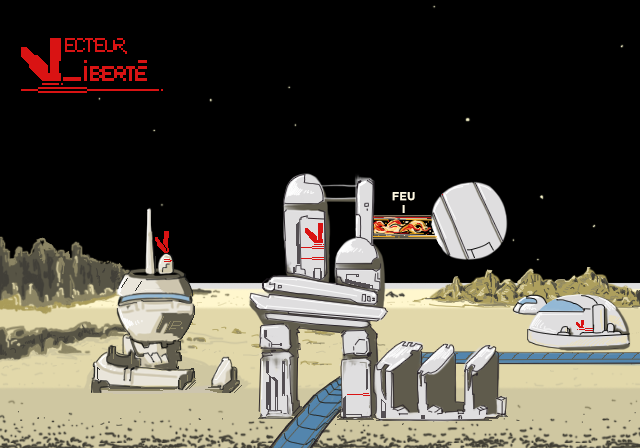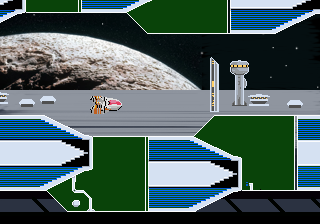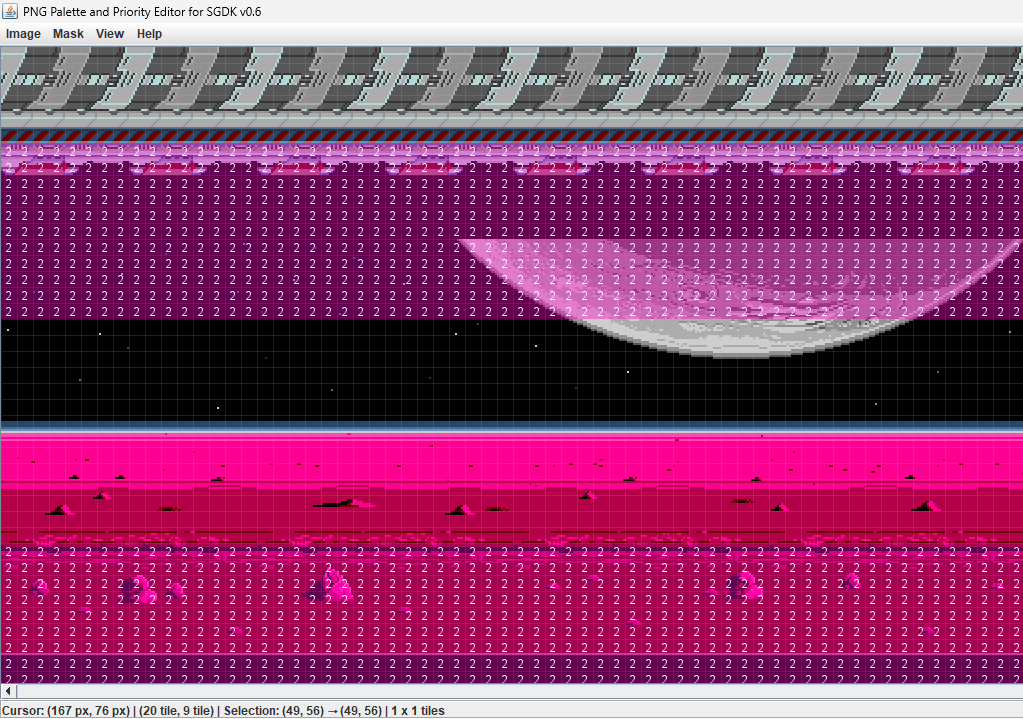The Hard Work
Learning the Basics
Before anything else, I had to learn SGDK and understand the Mega Drive’s architecture. That alone took me two to three months of deep diving into 16-bit development — countless hours spent digging through old forum posts, following Ohsat’s excellent tutorials, and chatting with the SGDK Discord community. And of course, none of this would even exist without Stéphane Dallongeville — infinite thanks to him for making SGDK.
On my learning journey, I also had a very good time at watching most of the Pigsy's Tutorial - a must see for any wannabe MD devs.
Once I felt ready, I began coding a fast-scrolling graphics engine. Even with SGDK making some things easier, trust me — building a complete game engine for a 16-bit console is no walk in the park.
Learning the Craft
As the code and assets grew, so did the need for tools to keep things efficient: faster compiling, better asset pipelines, level layout tools, palette management… It’s the kind of invisible work players never notice, but without it, there’s simply no game.
I learned tools like Aseprite, LDTk, and 16Tiles… and even created my own, now open-source: PngPalPrio4SGDK. It helps mix background planes' palettes and manage priority settings — a small but mighty timesaver for Mega Drive developers.
First Designs
One of Vector F’s key ideas was to feature semi-random race tracks. The goal: combine handcrafted sections of obstacles, walls, and enemies into a modular pool, then let the game assemble them dynamically, depending on the mode selected. This way, each run feels fresh without sacrificing deliberate level design.
Meanwhile, the graphic designer began early visual research, translating our team’s brainstorming sessions into concept sketches and pixel studies. The first thing that came out was a prototype ship, that was at first a "placeholder" and a temporary design. Eventually, it becames a real assets and is now a masterpiece of our to-be-released ships.

Another major challenge was ship controls. We wanted a sense of inertia, plus special moves mapped to the gamepad — something that feels satisfying yet precise. These two challenges alone consumed most of my nights and weekends until December 2025, all while I was still learning the intricacies of SGDK and the inner workings of Sega’s beloved 16-bit machine.
Building the Engine
The graphic designer began designing our first level's background. At first, we imagined a cloud parallax, but then the amazing Earthion demo came out with the so beautiful cloud parallax - exactly the style we had in mind - forcing us to rethink our approach. Next, we considered an asteroid field, but it felt too common. In the end, we settled on a more neutral setting: the surface of Venlog’s moon, blending modern tunnels with open views of the moon itself. This design works well as the first level—generic enough to serve as a “caravan mode” track, yet flexible enough to allow for more unique and specialized levels later in the game.

At the start of 2025, I focused on performance and scrolling speed. That’s when we realized the game wasn’t running at a stable 60fps. My initial approach — loading full columns of tiles every frame — simply couldn’t handle it. After all, the game needed to load three entire columns of 40 tiles per frame !
The solution? Rewrite almost all of my previous code. It was a tough and sometimes demotivating task — nobody enjoys redoing work — but it was also an exciting challenge. Debugging how tilemaps and the VDP work at a low level was incredibly instructive, and I can highly recommend this kind of deep dive to any Mega Drive developer.

This forced me to rethink how background tiles were loaded, and the random section system I had designed initially no longer worked the same way. It led to yet another complete engine overhaul — which lasted until March 2025. By then, the engine finally reached a constant 60fps, although there was still much to implement and optimize in the game.
With the technical foundation in place, it was finally time to design the game itself — and I had no idea this would prove to be the hardest challenge of all. Every system, every track section, every control tweak suddenly mattered more than ever. Could the ideas we had in our heads actually come to life? Or would the game stall before it even reached its full potential?
VECTOR F
High-speed deathrace. One way out. VECTOR F rewrites the rules.
| Status | In development |
| Author | GONESBREW -[Rahzelk]- |
| Genre | Fighting |
| Tags | 2D, Arcade, deathmatch, Homebrew, Mega Drive, Pixel Art, Retro, Sega Genesis, Side Scroller, Versus |
| Languages | English, French |
More posts
- The Upside Down26 days ago
- The Warpzone78 days ago
- The Unexpected Challenge90 days ago
- The BeginningAug 14, 2025
- WarpZone 05/2025May 14, 2025
